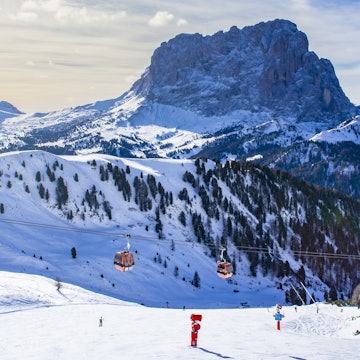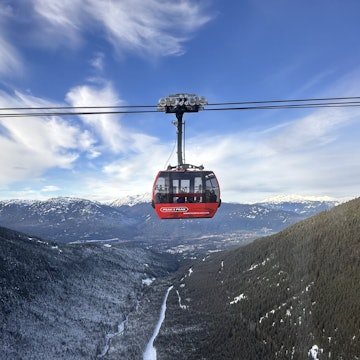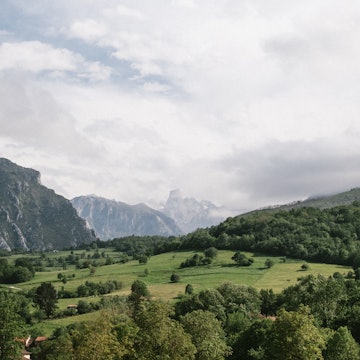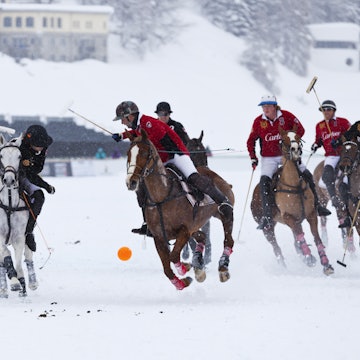
Could Uzbekistan become Central Asia’s first Shangri-La for skiers and snowboarders?

Mar 6, 2020 • 4 min read

In a must-read consent form titled ‘Safety Instructions for Organised Tour Groups Under Heli-Ski Programme’, specialist operator Asia Adventures lists 60 clauses and sub-clauses that’d make anyone think twice before trying heli-skiing in the Western Tian Shan mountains of northeast Uzbekistan.

Anxiety-raising terms such as ‘extreme caution’, ‘mountain edges’, ‘unfavourable weather’, ‘avalanche zone’, ‘wild animals’ and ‘harm to life’ all appear in the small print. And yet, this hazardous activity is quickly becoming one of the region’s new draws, where hardcore powder hounds – including me – pay to be dropped by a Russian Mi-8MTB helicopter on pristine peaks at 4,200m. Understandably, perhaps, the words I scream when jumping out can’t be repeated here.
After touching down safely, my group of pioneering skiers and I all pinch ourselves as we look around at the extraordinarily-empty Chatkal Mountains. There are too many snow-plastered peaks to count, all covered in trackless, thigh-deep powder. As we survey the scenery we ask one another, are we standing in the world’s next big ski destination?

The mountains of Uzbekistan
In Uzbekistan, it is easy to become obsessed with the mountains, even if exploring its wilderness isn’t so straightforward.
Running from the outskirts of capital Tashkent to Ugam-Chatkal National Park 90km to the north, the Chatkal range, bordering Kazakhstan and Kyrgyzstan, is a case study in geographical purity, appearing on the map – and from the vantage point of a helicopter – as a vast, unadulterated wilderness inhabited by almost no one. No other mountains in Europe, North America or Asia feel so undeveloped.
But while Uzbekistan’s Silk Road route is a venerated summer destination (Samarkand, Bukhara and Khiva have all the crumbling citadels and madrasahs you could ever wish for), winter tourism here has – like much of Central Asia – traditionally been pretty much non-existent.
Facilities for skiers (the core winter tourism market) in Uzbek’s Tian Shan are spartan: at the mountains’ original ski town, Chimgan, there is one merry-go round chairlift, a few retro button tows, an off-piste kebab shop and makeshift bazaar populated by tea drinkers, sheep farmers and horse wranglers. Not far away in Beldersay, in the shadow of the summit of Greater Chimgan, is a rickety chairlift, a drag lift and a hotel furnished with the cold appeal of the Soviet era. Après-ski? Bring a bottle of vodka to dinner or forget it.

The €100 million game changer
But over the next snow-filled basin, change – and artificial snow – is in the air: a new €100 million resort, opened in late 2019, that looks less Communist relic, more next-season St Moritz.
Here, there are log cabins with faux leather-trim and floor-heating, geodesic-domed restaurants and snowmaking machines that wouldn’t feel out of place in Courchevel. By day, visitors ride a sparkling new gondola and quad chairlift – both firsts in Uzbekistan – to virgin slopes (including backcountry glades likely never seen by human eyes before) and cruise on snowmobiles up and over curls of pillowy drifts.
This is Amirsoy, conceived in 2017 after local oil and gas businessman Rashvan Abdullaev, 44, decided to fight his fear of heights by trying skiing for the first time. That calculated gamble has put in place the first building block of a plan to transform the Western Tian Shan mountains into an unlikely winter tourist destination.
For thrill seeking skiers, the cherry on top is the availability of the aforementioned heli-skiing – a version of off-trail skiing that involves using a helicopter to reach inaccessible pistes. The activity is eye-wateringly expensive in most European resorts (and completely banned in Germany and France), but here the adrenaline-inducing activity is relatively cheap.

Building from the ground up
The resort is certainly laying down a refreshing new marker in Central Asia, but there is also a feeling it is being driven by a sense of civic duty – more than 150,000 locals have visited since the resort opened in late-December.
“There’s no ski culture here,” Rashvan says, with a heavy Turkic accent. “Locals take three laps of the gondola because they’ve never seen one before. So we’re building an entire community and culture from the ground up.”
As it turns out, this is also just the beginning. There’s a tantalising blueprint in place to create one colossal ski area, first by upgrading Chimgan and Beldersay, then by marrying them to Amirsoy, a highly ambitious move that would create the Central Asian equivalent of France’s renowned Les Trois Vallées or Canada’s Whistler Blackcomb in British Columbia. As Rashvan says, “This is dream work, so we dream big.”
Hearing this, I can’t help think back to the heli-skiing ‘Safety Instructions’ consent form. This endeavour comes with significant risks and most would be put off, perhaps even branding it as foolish. But if Rashvan and his team stick the landing, they could take Central Asia’s tourism scene to spectacular new heights.

You might also like:
Eternal winter: where to ski every month of the year
20 unmissable extreme sports (and where to try them)
Are these the craziest sports in the world?
Mike MacEacheran travelled to Uzbekistan with assistance from Uzbekistan Tourism. One week heli-skiing packages with Asia Adventures cost from US$4500, or US$400/500 for three/four ski drops. Two bedroom cabins at Le Chalet by Amirsoy cost from US$400 per night, bed and breakfast. Lift passes at Amirsoy cost US$23 a day. Lonely Planet contributors do not accept freebies in exchange for positive coverage.













